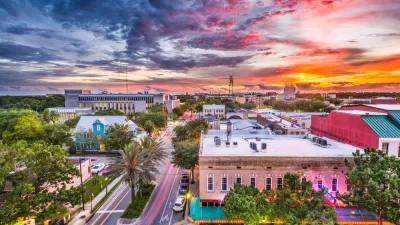New research shows that affordable housing mandates usually don't raise housing costs, but often fail to benefit benefit the lowest-income families.

Research from the National Housing Conference's Center for Housing Policy clarifies the impacts of inclusionary zoning policies, which require developers to include some affordable units in their buildings. Brentin Mock from CityLab summarizes the major findings.
The good: In most cases, inclusionary zoning requirements haven't driven housing costs up. Nor have they slowed housing production. Those findings challenge the argument of some developers who oppose affordable-housing mandates, especially in California.
The bad: Inclusionary zoning policies have largely failed to create affordable housing for the lowest-income households—and most policies aren't designed to target them. That can lead to a lack of support for programs:
After all, if it’s going to be called “inclusionary zoning,” it should include those who are most in need of housing. People actually need to be able to buy into the properties in order to buy in to the policy.
Pittsburgh is considering ways to address this problem, which Washington, D.C. also dealt with recently. San Francisco, New York, Seattle, and more cities throughout the United States have also recently taken up questions around inclusionary zoning.
The research also notes that the success of these policies is influenced by factors that can vary by city and over time, like the strength of an area’s housing market or a policy's compatibility with state law.
FULL STORY: Inclusionary Zoning Does Not Drive Up Housing Costs

Maui's Vacation Rental Debate Turns Ugly
Verbal attacks, misinformation campaigns and fistfights plague a high-stakes debate to convert thousands of vacation rentals into long-term housing.

Planetizen Federal Action Tracker
A weekly monitor of how Trump’s orders and actions are impacting planners and planning in America.

In Urban Planning, AI Prompting Could be the New Design Thinking
Creativity has long been key to great urban design. What if we see AI as our new creative partner?

King County Supportive Housing Program Offers Hope for Unhoused Residents
The county is taking a ‘Housing First’ approach that prioritizes getting people into housing, then offering wraparound supportive services.

Researchers Use AI to Get Clearer Picture of US Housing
Analysts are using artificial intelligence to supercharge their research by allowing them to comb through data faster. Though these AI tools can be error prone, they save time and housing researchers are optimistic about the future.

Making Shared Micromobility More Inclusive
Cities and shared mobility system operators can do more to include people with disabilities in planning and operations, per a new report.
Urban Design for Planners 1: Software Tools
This six-course series explores essential urban design concepts using open source software and equips planners with the tools they need to participate fully in the urban design process.
Planning for Universal Design
Learn the tools for implementing Universal Design in planning regulations.
planning NEXT
Appalachian Highlands Housing Partners
Mpact (founded as Rail~Volution)
City of Camden Redevelopment Agency
City of Astoria
City of Portland
City of Laramie





























